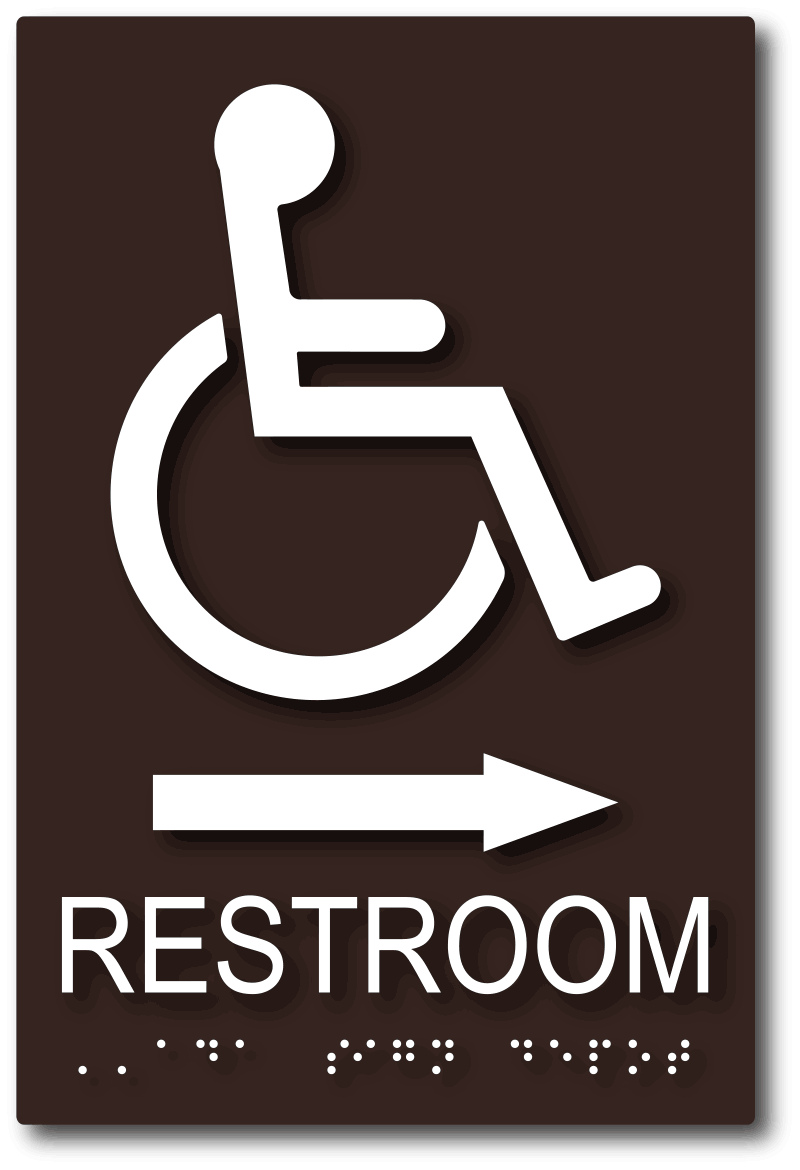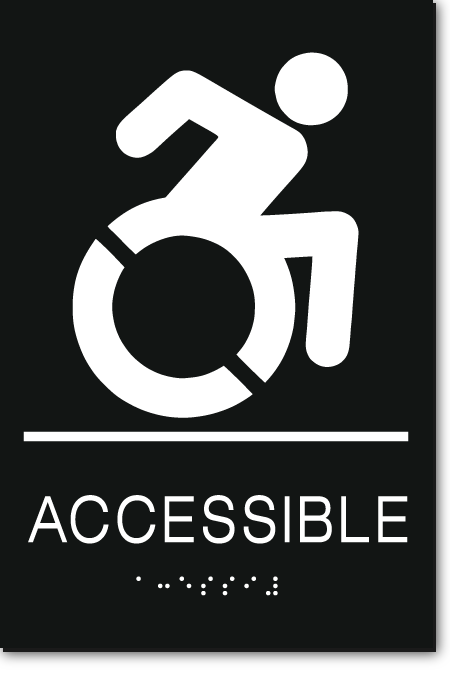The Advantages of Using Top Notch ADA Signs in Your Business
The Advantages of Using Top Notch ADA Signs in Your Business
Blog Article
Discovering the Secret Attributes of ADA Indications for Enhanced Ease Of Access
In the realm of availability, ADA indicators function as silent yet powerful allies, making sure that spaces are navigable and comprehensive for individuals with specials needs. By integrating Braille and tactile aspects, these indications break barriers for the aesthetically impaired, while high-contrast color design and readable fonts accommodate diverse visual needs. Their calculated positioning is not arbitrary yet rather a calculated initiative to assist in smooth navigating. Yet, past these attributes lies a much deeper story concerning the advancement of inclusivity and the ongoing dedication to creating equitable rooms. What a lot more could these indications indicate in our search of global access?
Importance of ADA Conformity
Making sure compliance with the Americans with Disabilities Act (ADA) is essential for promoting inclusivity and equivalent access in public rooms and workplaces. The ADA, established in 1990, mandates that all public facilities, companies, and transport services suit people with impairments, ensuring they appreciate the exact same rights and chances as others. Compliance with ADA requirements not only satisfies lawful obligations but also enhances a company's credibility by demonstrating its dedication to diversity and inclusivity.
One of the crucial aspects of ADA compliance is the implementation of easily accessible signage. ADA indicators are developed to ensure that people with handicaps can quickly navigate through spaces and buildings.
Additionally, adhering to ADA laws can reduce the risk of potential fines and lawful effects. Organizations that fail to abide by ADA standards may encounter legal actions or fines, which can be both monetarily difficult and damaging to their public photo. Hence, ADA compliance is essential to fostering a fair setting for every person.
Braille and Tactile Components
The incorporation of Braille and responsive components right into ADA signage personifies the concepts of access and inclusivity. These functions are essential for people who are blind or aesthetically damaged, enabling them to navigate public areas with higher self-reliance and confidence. Braille, a responsive writing system, is vital in providing composed info in a style that can be quickly regarded via touch. It is commonly placed below the corresponding message on signage to make sure that people can access the info without visual help.
Tactile components expand past Braille and consist of raised symbols and characters. These elements are created to be noticeable by touch, allowing people to identify space numbers, bathrooms, departures, and various other crucial locations. The ADA establishes certain standards concerning the size, spacing, and placement of these tactile aspects to enhance readability and make sure uniformity across various atmospheres.

High-Contrast Color Design
High-contrast shade plans play a pivotal role in improving the visibility and readability of ADA signs for individuals with visual impairments. These schemes are important as they maximize the difference in light reflectance between text and background, guaranteeing that signs are quickly noticeable, even from a range. The Americans with Disabilities Act (ADA) mandates using particular shade contrasts to suit those with minimal vision, making it a crucial aspect of compliance.
The efficiency of high-contrast shades lies in their capacity to stick out in various lights problems, including poorly lit atmospheres and areas with glow. Typically, dark message on a light history or light message on a dark background is used to attain optimal contrast. Black message on a white or yellow history offers a raw visual difference that check here aids in fast acknowledgment and understanding.

Legible Fonts and Text Dimension
When thinking about the style of ADA signage, the selection of readable typefaces and proper text dimension can not be overstated. The Americans with Disabilities Act (ADA) mandates that fonts must be not italic and sans-serif, oblique, script, very ornamental, or of unusual form.
The size of the message also plays an essential duty in ease of access. According to ADA standards, the minimal message height ought to be 5/8 inch, and it must increase proportionally with checking out range. This is especially important in public rooms where signage requirements to be read swiftly and accurately. Consistency in message size contributes to a natural visual experience, aiding individuals in navigating atmospheres effectively.
In addition, spacing in between lines and letters is essential to clarity. Adequate spacing prevents personalities from appearing crowded, improving readability. By sticking to these criteria, developers can considerably enhance availability, guaranteeing that signage offers its intended objective for all people, no matter their visual capabilities.
Effective Positioning Approaches
Strategic positioning of ADA signage is essential for making best use of accessibility and guaranteeing compliance with legal requirements. Effectively located signs lead people with impairments effectively, helping with navigation in public areas. Key considerations consist of exposure, closeness, and elevation. ADA standards state that signs should be placed at an elevation in between 48 to 60 inches from the ground to ensure they are within the line of view for both standing and seated individuals. This common height array is crucial for inclusivity, allowing mobility device customers and individuals of differing elevations to gain access to info easily.
Furthermore, signs need to be placed adjacent to he said the latch side of doors to permit simple recognition before entry. This placement helps individuals find spaces and spaces without obstruction. In instances where there is no door, indications must be situated on the local nearby wall surface. Consistency in indicator placement throughout a facility enhances predictability, decreasing confusion and boosting total customer experience.

Conclusion
ADA signs play an essential role in promoting availability by integrating attributes that attend to the demands of people with handicaps. Incorporating Braille and tactile components makes sure important information is obtainable to the aesthetically damaged, while high-contrast shade schemes and understandable sans-serif font styles boost presence across different lighting conditions. Reliable placement methods, such as ideal mounting heights and tactical locations, additionally promote navigating. These aspects collectively cultivate an inclusive environment, highlighting the value of ADA compliance in making sure equivalent access for all.
In the world of availability, ADA indications serve as quiet yet effective allies, making certain that rooms are accessible and inclusive for people with impairments. The ADA, enacted in 1990, mandates that all public centers, employers, and transport services fit individuals with specials needs, ensuring they take pleasure in the exact same civil liberties and opportunities as others. ADA Signs. ADA indications are created to make certain that people with disabilities can conveniently browse with rooms and structures. ADA guidelines state that indicators must be installed at an elevation in between 48 to 60 inches from the ground to guarantee they are within the line of sight for both standing and seated individuals.ADA indications play a vital role in promoting accessibility by incorporating functions that attend to the requirements of people with specials needs
Report this page